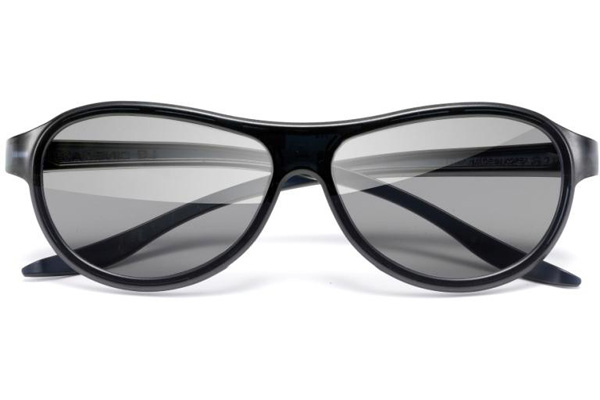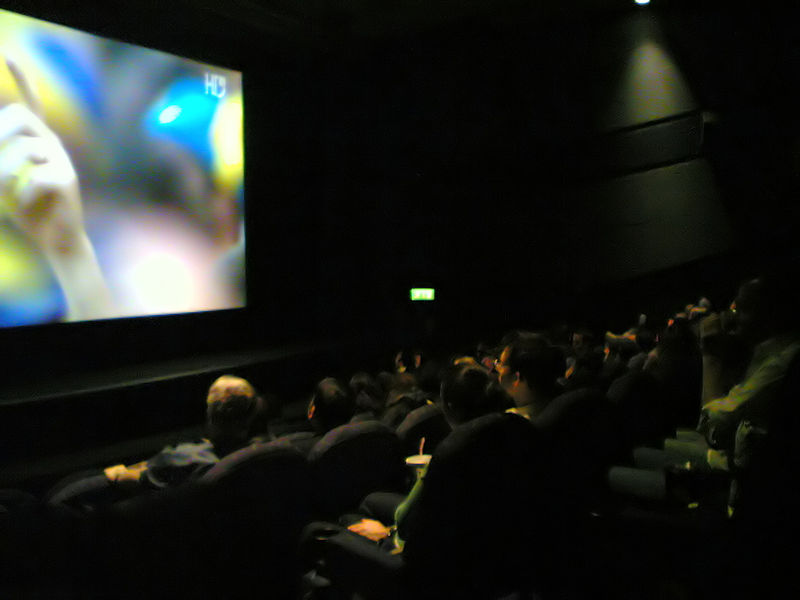Going to the movies is fun, but it’s not always the most economical night out. Think about it – you’re going out to stand in a line, then squeeze into a dark room with a mob of strangers for two hours. Is that really worth the ticket prices?

source: wikipedia
Here’s our guide to recreating the cinema experience in your very own home, where you can control the viewing schedule, the seating arrangements, and the snack options:
The Screen
When it comes to movie screens, the usual rule is “Bigger Is Better”. Something like Mad Max: Fury Road is a very different experience when viewed on a tiny smartphone screen when compared to the local multiplex.

Samsung UA75JU6400 75 inch 170cm 4K Ultra HD Smart LED LCD TV
The same rule applies when choosing a screen size for your home’s TV – if you want a cinema-like experience, you’ll want the biggest screen size possible.
But there are limits. We can’t all fit a gigantic TV in our home. Especially in units and other smaller homes, a big screen can take up an immense percentage of your home’s available space.
Plus, we don’t only watch big, epic, cinematic films on our home TVs. We also watch them for the news, for game shows, for cartoons, and for dramas. While something like Independence Day would do well on a top-notch home theatre setup, an over-the-top screen and sound system may be a bit too much for something like Pride & Prejudice (unless you’re heavily invested in that Colin Firth scene).
So try to choose the largest and most comfortable screen possible, with the screen filling the majority of your vision, without peripheral distractions, and without your eyes getting tired or overwhelmed. Generally, this translates to a viewing distance of approximately 2.5 times the diagonal width of your TV.
So for a 50” TV screen, you’ll want to sit about 125” from the TV (a bit over 10 feet, or around 3 metres).

Crest CBFP1F Fixed Wall Mount Medium for 32-60 inch TVs
Another way to enjoy a comfortable viewing experience is to wall-mount your TV screen. This can save you from that neck-craning experience when you have to sit in the front row down at the movie theatre.

LG PH300 High Definition LED DPL Projector
An alternative option for if you want to enjoy the occasional big-screen viewing extravaganza at home is to use a projector. These devices are generally fairly compact in size, and can be dug out of storage whenever you want to watch something suitably spectacular. All you really need is a blank wall in a neutral colour, or alternatively a projector screen that you can roll up and stash away when it’s not in use.
Enter…the THIRD dimension!
It can’t have escaped your notice that pretty much every major film to have been released since Avatar has included a 3D viewing option.

source: wikipedia
Whether this is your cup of tea or not, many new TVs also include an option for watching 3D Blu-rays. Plus, some 3D Blu-ray players and 3D TVs include an upscaling 3D conversion mode that could make even 2D classics like Casablanca leap out from the screen!

The other benefit of watching 3D movies at home rather than at the cinema? You get to choose who sees you wearing the 3D glasses, which can sometime leave you looking a bit goofy.
The Sound
Big movies deserve big sound – not just in terms of volume, but immersion. Since top-notch TVs tend to be rated on their picture size and resolution rather than their in-built speakers, extra audio equipment is often a necessity for turning a TV into a home theatre.

Samsung HT-H6550WM 5.1 Channel 3D Blu-ray Home theatre System with Wireless Rear Speakers
Many Home Theatre Systems offer surround sound setups, with a multitude of speakers that can be placed around your living room, creating an impression of being part of the action taking place on screen. However, this can take up a fair bit of space in the home, meaning that it might not be the most practical option in a compact room.

Samsung HW-J450 2.1Ch Sound Bar With Wireless Subwoofer
A fair compromise could be just to add a smaller sound system, such as a space-saving soundbar, and add that bit of extra grunt your TV’s lacking. Some newer soundbars provide the option of 3D sound, cleverly using acoustics to recreate the effect of surround sound audio.
The Lighting
There’s a reason that cinemas are dark, other than providing a bit of privacy for teenagers to have a sneaky pash in the back row. When there’s no ambient light, there are no reflections or other distractions from the film.

For a similar effect at home, turn off the lights and shut the curtains, leaving the minimum level of ambient light available. If you do opt for this approach, make sure that your TV has an exceptional black level – it’s a bit off-putting to see a supposedly “black” screen appear as a noticeably dark grey square when compared to the darkness surrounding it.
Running the show
One advantage a cinema has over a home theatre is its staff, who keep things running smoothly while you’re busy stuffing your face with popcorn.

They also work hard to keep all this clean… (source: wikipedia)
In a home theatre, you have to handle the projectionist’s job yourself, managing the screen, the Blu-ray player, and the audio system to create the perfect cinema experience.
To manage this without hassles, it’s often worth investing in equipment all from the same brand, as in some cases, this allows a single remote control to “talk” to all of the different devices, minimising the effort required to manage your entertainment.
Newer systems even include gesture and voice control, so you can sit back in your luxurious seat and love your movie experience with just a word or a wave of the hand. Hopefully you don’t have to share the armrests, either…
Technical difficulties
Is there anything more frustrating than when you go out to the movies and there’s a blackout halfway through the show? Or when an inattentive projectionist doesn’t bother to sync up the soundtrack, and the movie starts with no sound?
To protect your own appliances from electrical dangers, and to ensure that they last for as long as possible, use surge protectors to manage voltage spikes that can wear out your electronics. Though if there is a blackout or lightning strike in your area, you’re on your own…

Yamaha RXV477B 5.1Ch Network AV Receiver
And for easier connection between different peripherals, so that your screen, speakers and media players all sync up perfectly, you can use an AV Receiver to manage the different devices, or even connect them all wirelessly via your home network with the help of handy wireless adapters.
“And now, a word from our sponsors…”
While watching previews for other cool movies when you go to see a film can be pretty cool, waiting for all the ads to finish before you can get to the movie you paid to see can be excruciating.
Most of the time when you’re watching a home theatre, you’ll be viewing content of your own choosing, whether from discs or streaming downloads, meaning ads are the last things on your mind.
But sometimes you’ll want to use your powerful AV setup for a particularly special piece of broadcast TV, such as a grand final or the State of Origin.

LG RH735T 500GB HDD Twin HD Tuner DVD Recorder
This is the point where making a PVR part of your home theatre setup is worth its weight in the precious metal of your choice.
Selected PVRs will allow you to pause and rewind live TV, or record it to view a little later so you can repeat the best bits, skip over the boring bits, and put the show on hold while you need to nip off to the bathroom.
Your turn:
Now you just need to sit back with some popcorn and a drink (visit Appliances Online to find popcorn machines and bar fridges) and watch the movie! Hopefully the only jerk rattling a choc top wrapper during the quiet parts will be you…